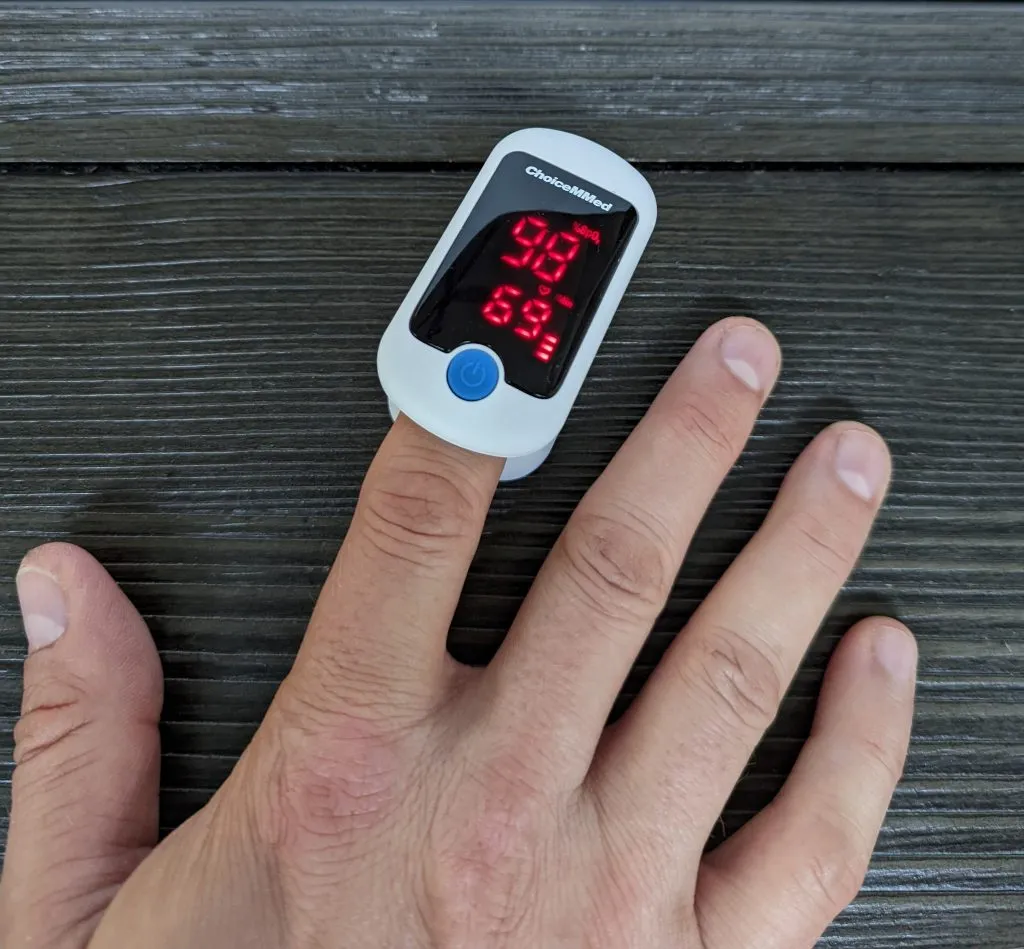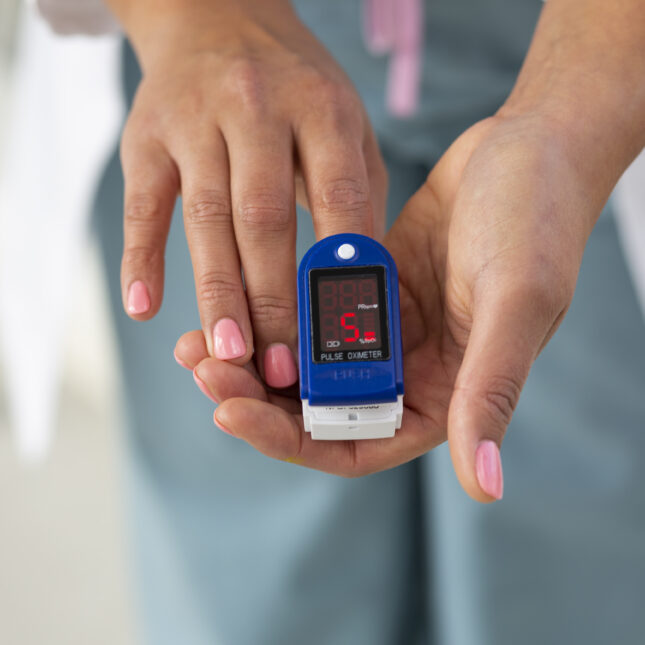A pulse oximeter is a small but mighty tool that plays a crucial role in monitoring health. It’s like a tiny guardian that keeps an eye on how much oxygen your blood carries. Using a clip that attaches to your fingertip, it shines light through your skin. It then measures how this light interacts with the blood flowing beneath. The oximeter tells you the percentage of oxygen in your blood and your pulse rate. This information is vital, especially for people with respiratory issues. It’s a simple, quick, and non-invasive way to stay informed about your health!
What Are Pulse Oximeters?
Pulse oximeters are handy gadgets that measure how well oxygen travels through your body. You just clip one onto a part of your body, like a finger. It uses light to measure the oxygen in your blood. This helps you know if you’re getting enough oxygen. It’s super useful for doctors to check on patients, especially those with heart or lung issues. It’s painless and quick. Even athletes use them to monitor their oxygen levels during training.

The Benefits of Using a Pulse Oximeter
A pulse oximeter is a small, nifty device that offers a wealth of benefits for monitoring health. It’s super easy to use. You simply clip it onto your fingertip, earlobe, or toe, and it reads your blood oxygen levels. This information is crucial for people with respiratory conditions like asthma or COPD. It helps them manage their condition effectively.
One of the biggest advantages of a pulse oximeter is its ability to provide instant feedback on your health. It shows how well oxygen travels through your body. This is especially important during or after surgery when oxygen levels can fluctuate. Doctors often use it to make sure patients are breathing well.
For those with chronic lung conditions, a pulse oximeter is a lifesaver. It helps in monitoring their oxygen levels at home. This lessens the requirement for repeated hospital stays. It’s also great for athletes. They use it to check if their body gets enough oxygen during intense workouts. This helps them optimize their training routines.
Using a pulse oximeter is also beneficial for people with sleep apnea. It can monitor oxygen levels while they sleep. This helps in adjusting treatments for better sleep quality. Moreover, it’s a great tool for smokers or people living in high altitudes. It helps them understand how their environment affects their oxygen levels.
How do pulse oximeters work?
Understanding how pulse oximeters work is quite fascinating and straightforward. Let’s simplify it into the following key points:
Simple Design: Pulse oximeters are small, clip-like devices that you attach to your fingertip. They are simple to use and painless.
Dual Light Waves: Inside the oximeter, there are two light sources – red and infrared. These lights shine through your fingertip during measurement.
Measuring Blood Oxygen: Blood carries oxygen, and depending on the oxygen level, it absorbs different amounts of light. The oximeter measures this.
Red vs. Infrared Light: Oxygen-rich blood absorbs more infrared light and lets more red light pass through. Oxygen-poor blood does the opposite.
Light Detection: After passing through your finger, the light hits a detector on the other side of the oximeter.
Calculating Oxygen Saturation: The device calculates the ratio of red to infrared light, giving an estimate of your blood oxygen level.
Immediate Results: Once clipped on your finger, the oximeter gives a reading in seconds. This reading is the oxygen saturation percentage.
Normal Oxygen Levels: A healthy oxygen saturation level typically ranges from 95% to 100%.
Versatile Use: Pulse oximeters are useful for doctors in hospitals, for people with respiratory conditions at home, and even for athletes during training.
Non-invasive Monitoring: One of the best things about pulse oximeters is that they don’t require any blood draw or skin pricking.
Limitations and Accuracy: While very helpful, they can be affected by factors like nail polish, cold fingers, or poor circulation.
Not a Breathing Measure: It’s important to remember that oximeters measure oxygen in blood, not how well you’re breathing.
Healthcare Guidance: Always use a pulse oximeter as a guide and consult healthcare professionals for comprehensive health assessments.
Pulse oximeters offer a quick, easy, and non-invasive way to monitor the oxygen levels in your blood. They work by shining light through your finger and measuring how much light your blood absorbs.
How to Read a Pulse Oximeter?
Reading a pulse oximeter is a simple and quick process. Let’s go through the steps together in a friendly and easy way:
Turn On the Device: Start by turning on the pulse oximeter. Most models have a simple button to press.
Place on Your Finger: Open the clip and place it on your fingertip. A snug fit is ideal, but not too tight.
Sit Still During Measurement: Keep your hand still while the oximeter takes its reading. Movement can affect accuracy.
Read the Display: After a few seconds, the oximeter will display two numbers. These are your oxygen saturation and pulse rate.
Understand Oxygen Saturation (SpO2): The first number, often marked as SpO2, shows your blood oxygen level. It’s a percentage value.
Normal SpO2 Levels: A normal SpO2 reading usually ranges between 95% and 100%. This means your blood has enough oxygen.
Check Your Pulse Rate: The second number is your pulse rate. It tells you how many times your heart beats in a minute.
Normal Pulse Rate: A typical pulse rate is between 60 and 100 beats per minute. But this can vary depending on your fitness level and activity.
Look for Steady Readings: Wait for the numbers to stabilize for a more accurate reading. Fluctuating numbers might not be accurate.
Consult a Healthcare Professional: If your readings are consistently below normal, consult a healthcare professional for advice.
A pulse oximeter is a helpful tool but not a substitute for medical advice. Use it as a guide to understand your body better. Regular monitoring can help you stay informed about your health, but always consult a healthcare provider for any concerns or abnormal readings. Reading a pulse oximeter is that easy!

FAQs
What does a pulse oximeter measure?
A pulse oximeter measures two things: your blood oxygen level and your pulse rate. It shows how well your blood is carrying oxygen and how fast your heart is beating. The blood oxygen level, shown as a percentage, tells you if your blood has enough oxygen. The pulse rate tells you how many times your heart beats in a minute.
How accurate are pulse oximeters?
Pulse oximeters are generally accurate, but they can sometimes be off by 2%. Factors like movement, poor circulation, or wearing nail polish can affect accuracy. It’s always good to have steady hands and clean, polish-free nails for the best reading. Remember, a pulse oximeter is a guide, not a medical diagnosis tool.
Can anyone use a pulse oximeter?
Yes, almost anyone can use a pulse oximeter. It’s easy and safe for both adults and children. People with health conditions like asthma or COPD find them especially helpful. Athletes also use them to monitor their oxygen levels during training. However, if you have specific health concerns or get unusual readings, it’s always best to consult a healthcare professional.
 Professional medical equipment supplier
Professional medical equipment supplier
